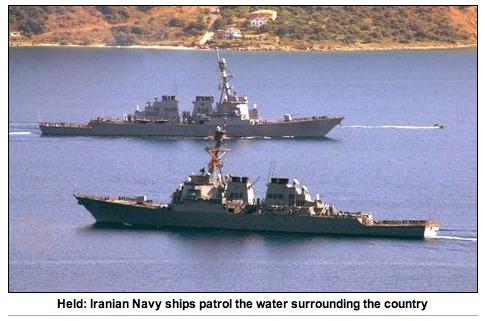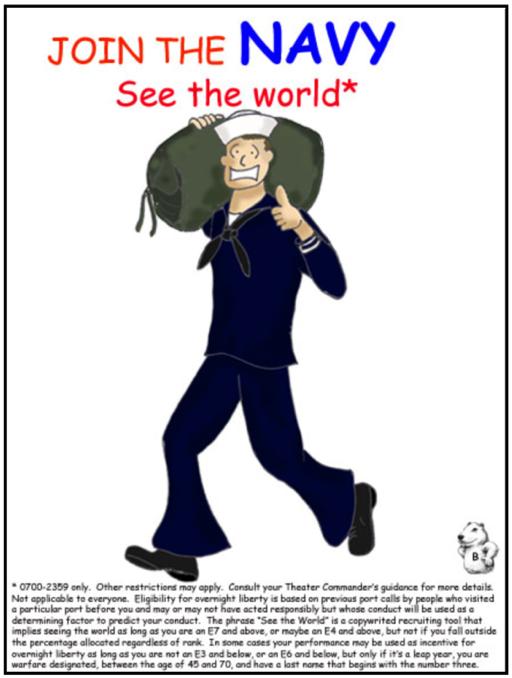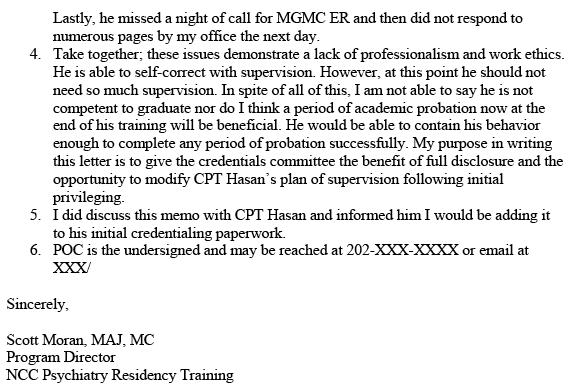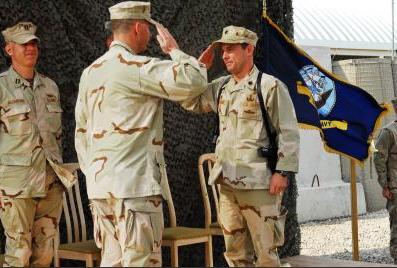This Diversity Thursday will be a 3-parter. Part I will be by a new guest blogger, USNA alumnus Dave Quint, ‘87. Part II will be a detailed discussion of the "Whole Person Multiplier" by Professor Bruce Fleming. Part III with be a brief reminder of what this all means for the Fleet - and for those who are being used as someone else's toys.
He is an SPHR certified human resources professional. In his day job, he is the HR Director for a company of 5000+ employees at 200+ locations in 11 states.
In his post, this quote stood out and you will see it again at the bottom of his post.I have never seen anything even close to this kind of a disparate impact on one race, ever. As an HR professional, these numbers are horrific. As a USNA graduate, I am embarrassed that several administrations have put a nice label, “Diversity”, on a very bad practice – blatant racial discrimination.
This post is not a Salamanderesque "Bachelor of Arts" babblefest of theory. No, Dave has done the 100# heavy lifting here that even a Surface Nuke would respect.
This is a serious post in tone, fact, and effect. Its importance demands your time. His method is sound, his delivery air-tight, and his numbers will leave you gobsmacked.
PART I
Professor Fleming
alleges racial discrimination in the admissions process at USNA.
I have just received proof over the weekend via a FOIA request.
Let’s take the most recent data – the Class of 2013:
Overall % of SAT scores below 600 (verbal): 33.6%
This figure represents the entire class of 2013, all races, all genders, etc. Everyone.
Keep that 33.6% figure in mind because once we break it down between blacks and whites, the % figure for each race shouldn’t stray very far from that average of 33.6%.
Whites: Overall % of SAT scores below 600 (verbal): 25.7%
This figure is off the average by 7.9% . . . more than I would have expected. But, this figure could be deemed “reasonable” if the figure for blacks is off the average by a similar amount. Not that it would be, but it could be. Add that 7.9% to 33.6% and we come up with 41.5%. While it’s actually a stretch to take a 25.7% acceptance rate for one race and 41.5% acceptance rate for another race, the evaluation becomes irrelevant when we look at the actual data. (
Side note: I believe this would-be notion falls apart quickly with actual statistical measures including standard deviation, etc.)
Blacks: Overall % of SAT scores below 600 (verbal): 70.7%
This figure is off the average by 37.1%!
There is no plausible explanation for this other than racial discrimination.
Proof: If you took the SAME data and switched the races, what would it look like?
Other-way-around view: 70.7% of whites get into USNA with a verbal SAT score below 600, while only 25.7% of blacks were admitted. Wow!
If it qualifies as discrimination for one race, then it qualifies as discrimination for ANY race.
If this ever occurred there would have already been a relentless storm of protests.
The SAT scores for math for the Class of 2013 display the Disparate Impact is even worse.
Overall % of SAT scores below 600 (math): 22.3%
Whites: Overall % of SAT scores below 600 (math): 14.4% That’s 7.9% off the average.
Blacks: Overall % of SAT scores below 600 (math): 71.7% That’s 49.4% off the average.So, how did this
Disparate Impact occur without notice, much less a protest? It’s called “Diversity”. You let the Sup declare “Diversity” as his #1 objective and all his staff (
if they know what’s good for their career) will step up and deliver. The problem is, what they have delivered is racial discrimination, plain and simple.
Dean Latta, Director of Admissions says that he believes their process is legal. Apparently, he’s not that proud of it though. When a taxpayer like myself asks for something as basic as SAT scores listed by race, he refuses to provide the information. Instead, Dean Latta insists on forcing me to use the FOIA request process, and he charged me $59.72 for the information. Therefore, I believe it is very unlikely that Dean Latta would be very inviting of anyone else who asks too many admissions-process-questions of this “man behind the curtain”.
I have never seen anything even close to this kind of a disparate impact on one race, ever. As an HR professional, these numbers are horrific. As a USNA graduate, I am embarrassed that several administrations have put a nice label, “Diversity”, on a very bad practice – blatant racial discrimination.
- Dave Quint ‘87
Phib back here.
One thing that is often brought up in admissions discussions is what at USNA they call the "Whole Person Multiplier," or just WPM.
To try to get ahead of the emails this time, I have decided to tap into my WPM SME, USNA Professor Bruce Fleming. He kindly offered to describe, in detail, what the WPM is and what is does - and more importantly does not - have to do with the Diversity side of admission.
Professor Fleming - over to you.
The logical question on looking at what is clearly a system rigged to admit non-white applicants—shown by a huge proportion of non-white (especially African-American) midshipmen with SAT scores below the level of 600, which is the with-some-exceptions LOWEST limit for competitive (white) applicants—is, how do they do it? Let me explain. I was on the Admissions Board in 2002-2003, and have confirmed from more recent members that these practices are unchanged, though some details have altered (for instance now Asians are a special racial group, as they were not 7 years ago).
First, this. The assumption of the outside world is liable to be that whatever the mechanism, it has to be legal, or the US Naval Academy (and the other service academies) wouldn’t be doing it. This is like saying, Pat Tillman can’t have died as a result of friendly fire, because the US Army is saying he didn’t. The Army was lying; Pat Tillman did die of friendly fire. The military misleads its civilian paymasters all the time. Similarly, when the inevitable lawsuit against USNA like the lawsuit against the University of Michigan in 2003 finally gets going, the ruling will have to be that what USNA (and other service academies) have been doing for years is quite illegal.
But how do they do it? Many people will assume that what papers over this racist and un-Constitutional practice is the thing called, at Annapolis, the WPM, Whole Person Multiple. This assumption probably comes from the fact that the Supreme Court held in the 2003 U of Michigan case that race could be considered not separately (as we do it) but as part of a whole package, just the way playing the ‘cello could be considered a positive commodity. (The assumption still was that, say, “African-American” means you see the world in a specific, and interesting, way, that will be enlightening to your fellow classmates: in an age of middle- and upper-class African-Americans this is highly questionable.) It fact it doesn’t; “how they do it” is precisely to essentially disregard the WPM for racial minorities and bring them a) over a lowered bar and b) through a separate door, called “direct” admissions. The WPM is in fact the good guy, and my argument has always been we should let it do its job for more than half the class.
What is the WPM? When someone applies to USNA the computer generates a WPM, in the days before women (i.e. pre-1976) called the WMM, Whole Man Multiple. This is a sophisticated algorithm that gives points via the computer for high school athletics, academics, and leadership, calibrated in a way a computer can calibrate: so many points for a certain GPA, so many points for upper 5% of class, so many points for a good high school (shown by the % of students going to 4-year colleges), so many points for team membership and more for captain, so many points for club membership and more for president, so many for Student Council or Government membership and more for office, so many points for SAT. Math is rated higher—it’s been given as much as 3x the weighting of verbal but I believe now is “down” to 2x, on the grounds that “we are an engineering school”—as we sometimes still hear. Yes, this is suicidal in the age of a brain-based counter-insurgency war, but we still do it. You get 500 points for being the child of an alumnus or an active duty service member, 500 points for a super essay, 500 points for a grade of l during USNA Summer Seminar. For competitive (white non-athletic recruit) students, the lowest we’re supposed to vote “qualified” is 58K (though the Superintendent can make any exception he chooses); a truly stellar WPM score is 70K (so 500 points isn’t much).
In fact we disregard the WPM for half the class: we generate it for all, then set it aside as irrelevant for the students we’re desperate to get. Athletic blue-chips and non-white minorities have a WPM but they are offered DIRECT admission typically with WPMs that would have resulted in white applicants being voted “not qualified.” The WPM does not have a “racial multipler”: it doesn’t have to, because it’s simply ignored for non-whites and team members.
The more important factor is that, in the briefing session at the Admissions Board, a self-identified minority applicant will probably be voted “qualified” for grades of largely Cs, with SAT scores down into the low 500s (remember 600 is usually the lowest score to get a vote of “qualified” for whites whereas a white applicant with the same scores will almost l00% of the time be voted “not qualified”). The minority applicant’s WPM doesn’t actually even matter, though it’s liable to be low 50Ks with these scores. They’re in. Even lower, and they’re in via a year at the hand-holding remedial school NAPS—which is filled with racial minorities with scores down to about 400 SAT, recruited athletes (same profile), and a handful of priors—and an even smaller handful of whites put into NAPS for political reasons. To repeat: low-performing whites are simply rejected: a white applicant with 450 SAT scores and not, say, a football player, will be rejected. NOT sent to NAPS. So NAPS (this year about 20% of the plebe class, 260 up from 204 the year before) is the other answer to “how do they do it?” If you say you’re Hispanic and can get 400 SAT scores and C grades (with no necessary athletics or leadership) you are coming to Annapolis via NAPS.
NAPS has become an embarrassment as the push to get in non-whites has intensified. In 2008 a whole trimester’s worth of (low) grades was thrown out because they would have doomed the students to a GPA of lower than 2.0, the minimum guaranteeing Annapolis acceptance. Besides, the 2.0 is regularly lowered either for the entire class or for individuals: once again Admiral Fowler, the current USNA Superintendent, has absolute deciding power on whether somebody comes to Annapolis or doesn’t, regardless of his GPA at NAPS. He personally goes to Newport to cook the books: he can’t be over-ruled, whatever his decision. NAPS had to introduce an even lower remedial level last year, and the CAPT in charge at NAPS was relieved of command; now the Academic Dean at NAPS has not had his contract renewed. Clearly they couldn’t make silk purses out of sow’s ears, so the USNA administration “lost confidence” (as the press reports had it) in them.
So, what use does the WPM have, except to eliminate low-level whites as not “qualified”? White candidates who are not also athletes or priors are never offered direct admission. Being voted “qualified” only means they are allowed to compete to win a “slate” of up to ten other applicants that (most typically) a Congress(wo)man has awarded nominations to. (Getting a nomination is a necessary but not sufficient condition of coming to Annapolis: we simply hand Secretary of the Navy “noms” to NAPSters and minorities direct-admitted; whites have to compete for them.) About half the time, the Congress(wo)man can name the winner of a slate (no reasons need be given, though many of them have their staff conduct interviews). In the other half of the cases, the highest WPM wins. So a white applicant with, say, a 62K WPM from a competitive state will still be rejected by not winning his or slate, while the self-identified (say) Hispanic with 52K got direct admission to USNA.
USNA hates to share this information: I was punished (I’ve filed a whistleblower complaint) for sharing this information with the world—and I’m tenured. Those in uniform or untenured civilians can’t open their mouths. It took a FOIA demand even to get the stats that show the clear two tracks based on race, above.
The WPM is the good guy. It gives points for smart studs with charisma (that’s the idea behind the three categories, anyway). But since we’ve already filled about half the class with team members and racial minorities (handful of priors too), they only have about 600 slots available to them. Since we get many more smart studs applying than 600, the others are rejected.
Bottom line: USNA works on a two-track admissions system which includes race as an absolute determiner. We have two sets of standards, two doors, and a taxpayer-supported remedial school, NAPS, that is not awarded to lower-track whites, who are simply rejected—and even higher-track whites, who come from competitive states and fail to win their Congressional slate.
Final point: the Commandant tried to explain the sudden increase in non-whites (27% to 35% between the Class of 2012 and the Class of 2013 as something beyond USNA’s control: as the result of the necessity for geographic diversity and the fact that Congress(wo)men can say who wins their slate. This is a total fabrication: minority candidates do not have to win their Congress(wo)man’s slate; they’re offered direct USNA admission or admission to NAPS. Minority admissions can all be from, say, El Paso and Oakland: there’s no necessary geographical spread in this at all. If you check one of the racial boxes and can write your name, you’re in, regardless of where you’re from. So that’s a lie too. Unless the Commandant really hasn’t been briefed on how it works?
So now we know “how they do it.” Why do they do it? I’ve speculated: they’re dinosaurs who think they’re being progressive in admitting and promoting to race, as if this were l968. My conservative friends assume that the conservative military would never do something like this on its own, but is either acting as a result of Congressional (i.e. liberal, bad) pressure, or to curry favor before the fact with that same liberal (bad) Congress. I don’t see this, and the military insists that this “sea change” belongs to them alone. What’s clear is that it’s decimated morale in the ranks and raised hackles against minority officers, now that the assumption now is (understandably) that they’re where they are because of their skin color: it’s a hugely destructive “solution” to an imaginary problem, namely the fact that about 40% of the enlisted corps in this time of an all-volunteer military and a bad economy are non-whites, and “only” 20% of officers are. So? We hear that volunteer military people only want competence, not skin color. Which—not to forget—is not a Constitutional reason for admitting or promoting.
The overall point to grasp is: in making its decisions, even if they’re illegal and destructive—as this race-based admission and retention policy is—the military thinks of itself as a special interest group whose livelihood is guaranteed by putting positive spin on events. It’s acting like a political party rather than the military of the entire society. For the record, this is a bad attitude, and hugely self-destructive, because it reduces civilian confidence in the military when the scandals finally break—as this one of race-based admission and retention finally has done. The military is once again “circling the wagons”—against the people they’re supposed to be protecting, and who pay their bills. Still, this “us vs. them” mentality with respect to the civilian world seems endemic to the military as currently constituted, and the defensiveness it engenders the source of the military’s greatest weakness (this is the subject of my upcoming book Bridging the Military-Civilian Divide).
But yes. Treating people differently based on their race is quite illegal. The Constitution says you can’t do it, and we’re doing it. And lying about it. With your tax dollars paying them to do it. Write your Congress(wo)man now. Write the Superintendent of the US Naval Academy. Write Senators McCain and Webb. And write to CDR Salamander.
Happy Thanksgiving!
Now some final thoughts. As is my nature and training, let's talk about just a few of the second and third order effects of all this.
Second Order Effects:
- When you break a peer group into different cohorts that have different average indicators of future success from each other, those different cohorts will, on average, perform at different levels going forward. Those cohorts that have higher indicator levels will perform better. Those with lower indicators will perform worse. As a result, in a zero sum game the only way to ensure that all cohorts receive equal outcomes is to discriminate against higher performing cohorts. If you want to maintain parity between each cohort, you must actively intervene at each career milestone. If you do not, you will create the appearance of inequality - because in a system with objective criteria, the cohort with lower indicators will always, on average, perform worse - and therefor will promote at lower rates in such a way that the identifiable cohorts will have drastically different outcomes. If all had equal outcomes at point 1 - and then don't at point 2 - then you have to explain why. Again, to avoid different outcomes between cohorts - you have to remove or work around objective criteria - if you don't then you have to admit your prior discriminatory behavior, or blame someone else.
- If you reach a career milestone (Commissioning, FITREPS, promotion boards, Command screen boards, etc) where active discrimination to ensure cohort parity is stopped and career progression is permitted to proceed on a meritocracy basis, then you will reach a point where others will have to make the quality cut. You pushed honesty and fairness to the right. The music will stop - only the quick get the chair.
That is the narcissistic selfishness of Diversity. It pushes the decision to someone else. Sure, you are may get your "minority accession goals" because you used different criteria for different cohorts - but at some point, when lives are at risk and the luxury of do-good-feel-goodism is no longer a smart thing - the breakout will have to take place. That of course, assumes that such behavior is allowed. See first point. In the case where cohort equal outcomes is paramount, the organization has accepted that Diversity is more important than lives, ships, aircraft, and nuclear reactor safety. Interesting world view - but not uncommon it seems.
Third Order Effects:
- Some, if not most, of the cohort that received special consideration beyond objective success indicators would be more than capable of being accepted under the objective criteria alone like their peers in the unprotected cohort. Those individuals with the highest success indicators will still be rewarded well beyond their peers of equal success indicators in the unprotected cohort, however. Middle-range protected like high-range unprotected, and so on.
What will always bother these individuals who would make it on their own merits, however, is that they will be forever tainted by being thrown in with the special consideration cohorts. They will forever be in a cloud of suspicion by their peers because a system has been set up to ensure that there will always be a question if they could have succeeded in a meritocracy, or if they were just another person's pet project.
- Being an officer in the Navy is not an easy job. It is not for everyone. An average Navy officer would most likely have an outstanding future in another field of work that better matched their skill set. When other people decide to artificially inject people into a career field where, by the demands of the field and its different success indicators, they are not qualified for - then the vast majority of those people selected under special consideration will expend their finite time pursuing a career path that they are ill-suited for and will not excel in. They will become frustrated with their job, and resented by their peers who have to make up for their shortcomings. Qualified watch standers are needed for the watch bill. Instructor pilots are needed to instruct. Short notice taskers require those who can perform quickly under pressure. We all know how this goes.
The narcissistic selfishness comes into play again. You only have a few short years in your life to set yourself up when you are young. Older leaders are using younger people's lives to meet their own desired PPT slides and talking points. As a result of a 50-something's desire to pursue a unicorn and enrich their own career prospects - they consume other's youth.
Gobble, gobble.














